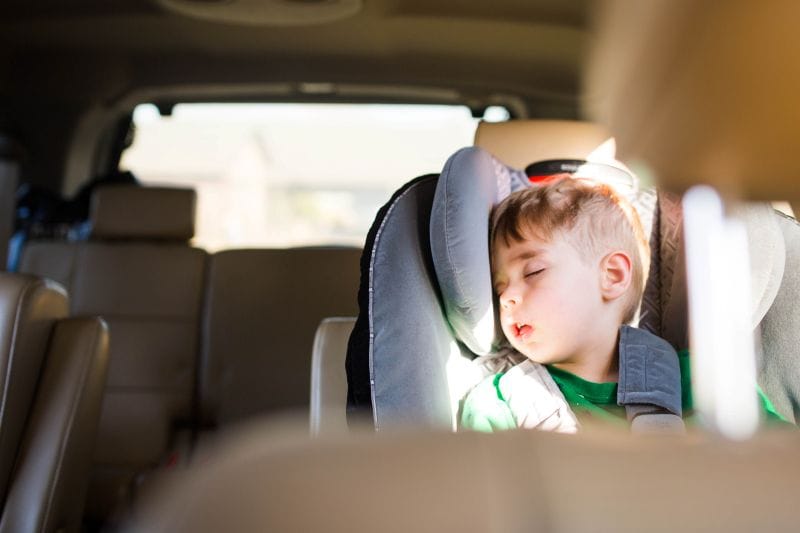Preventing Tragedy: The Ongoing Crisis of Child Heatstroke Deaths in Hot Cars
This is a story we wish we would never have to write again, but unfortunately, the tragedies continue to occur.
Within the past year, 15 children have died from heatstroke in a hot car, explains BayCare Kids Wellness and Safety Specialist Gina Baez.
Since 1998, 1,025 children have died in this way.
“It’s been a rough topic,” says Baez. Among those 15, five children were forgotten in cars, four knowingly left, and one gained access to the vehicle. The cause of the other five are under investigation. The oldest child was 6; the youngest, 3 months old. One was in Florida (Texas leads the nation).
Here’s the statistic that especially frustrates Baez: “These deaths are 100% preventable.”
June, July and August are the most dangerous months for these deaths, according to Jan Null, CCM, from the Department of Meteorology and Climate Science at San Jose State University, who maintains a website, http://noheatstroke.org, that is dedicated to facts and research on this topic.
About 21% of these cases occurred when children were knowingly left in a car. “We don’t realize how fast cars heat up,” says Baez. Temperatures in a car can rise 19 degrees in 10 minutes — even if windows are cracked. Even on a 70-degree cloudy day, a car can reach 100 degrees in just 19 minutes. “You want to think of it as a greenhouse,” Baez says.
While adults can also suffer heatstroke, the situation is more dangerous for children because their body temperatures rise three to five times faster than ours. Babies and very young children can’t regulate their body temperatures yet.
The key to prevention is layers of protection, Baez explains.
Forgetting Baby in a Hot Car
In more than half the cases, the deaths occurred when a child was forgotten in the car. As unlikely as that scenario appears, it can happen quite easily, especially when parents are sleep-deprived or out of their normal routine.
Here’s an example: Extended family comes to visit, and the primary caregiver takes the guests to brunch, so the parent who does not usually do drop-off takes the baby to daycare. But once they are in their car listening to the news and following their normal routine, they take their usual route to work, lock the door and go inside, only to realize when the daycare calls that they have forgotten to drop the baby off. This can and has happened.
Here are some tips from Baez and noheatstroke.org to prevent this type of scenario:
- “Always look before you lock,” Baez says. “Check that back seat every time.”
- Keep a reminder in the front seat, such as a stuffed animal that is always buckled into the front seat when the baby is in the back.
- Make a habit of keeping something in the back seat that you will not leave the car without, such as a shoe, a purse or the diaper bag.
- Communicate with daycares and caregivers when there is a schedule change in your home so that they know to be extra alert.
- Check in with the person who dropped off the baby to make sure everything went well.
- Use technology, even if it is a simple phone alarm or notification set for 15 minutes after drop-off to remind yourself that you should have dropped off the child. Some newer vehicles have sensors, although Baez warns that parents and caregivers should not become desensitized to the dings and beeps.
Prevent Access to Vehicles
In about 23% of cases, the deaths occurred children gained access to a car. Toddlers and preschoolers can easily wander outside or into the garage, slip into an unlocked car, and be unable to get back out.
- Keep your cars locked.
- Store keys out of reach.
- Teach kids not to play in cars and talk to them about the danger.
- If a child goes missing, FIRST check the pool and any bodies of water, and then check nearby vehicles, including the trunk.
Bystander Responsibilities
“We want to encourage people to take action,” Baez says. “If you are a bystander, act quickly. You don’t know how long the child (or pet) has been in the car. Don’t wait.”
- Assess the situation to see whether the child shows signs of heat distress. Symptoms include hot, red, dry skin, panting, dizziness, weak appearance, vomiting and loss of consciousness.
- See if the car is locked.
- Call 911 and follow the dispatcher’s instructions.
For more information about heat-related deaths and tips to prevent them, visit noheatstroke.org.
READ MORE:
iStock-1312461416 | Originally published in the August 2025 issue of Tampa Bay Parenting Magazine.


